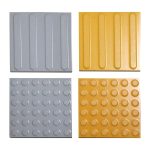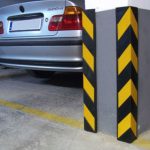Overview
Introduction to speed bumps
Speed bumps are a common traffic calming measure used to reduce vehicle speeds in residential areas, parking lots, and other locations where speed control is necessary. They are typically made of asphalt or concrete and are designed to slow down vehicles by creating a raised surface on the road. The purpose of speed bumps is to enhance safety for pedestrians and cyclists, discourage reckless driving, and promote a more peaceful and livable community. In this article, we will explore the importance of installing speed bumps and why they should not be ignored.
Purpose of speed bumps
The purpose of speed bumps is to slow down vehicles and promote safer driving in certain areas. Speed bumps are typically installed in residential areas, school zones, and parking lots to prevent speeding and ensure the safety of pedestrians and other road users. By creating a physical barrier on the road, speed bumps force drivers to reduce their speed, increasing the reaction time and reducing the risk of accidents. In addition, traffic control speed bumps are ideal for discouraging reckless driving behavior. In general, the installation of speed bumps is intended to improve road safety and create a safer environment for everyone.
Importance of addressing speeding issues
Speeding is a prevalent issue on roads and highways, posing a significant threat to the safety of motorists and pedestrians alike. Therefore, it is crucial to address speeding issues proactively. One effective measure to combat excessive speeding is the installation of speed bumps. These physical traffic calming devices serve as a visual and tactile reminder for drivers to slow down and adhere to the designated speed limits. By installing speed bumps strategically in areas prone to speeding, authorities can create a safer and more controlled traffic environment. Moreover, speed bumps also encourage responsible driving behavior and reduce the risk of accidents, making them an essential tool in promoting road safety.
Benefits of Installing Speed Bumps
Reducing vehicle speed
Reducing vehicle speed is crucial for ensuring road safety and preventing accidents. One effective measure to achieve this is by installing speed bumps. Speed bumps force drivers to slow down, as they are designed to create a jolt or discomfort when driven over at high speeds. By implementing speed bumps in residential areas, school zones, and other high-risk areas, the likelihood of speeding and reckless driving can be significantly reduced. This not only protects pedestrians and other road users but also encourages responsible driving habits. Therefore, it is important to acknowledge the importance of installing speed bumps and not ignore their potential in promoting safer roads.
Enhancing pedestrian safety
Enhancing pedestrian safety is a crucial aspect of urban planning and infrastructure development. Installing speed bumps is an effective measure that should not be ignored. Speed bumps help to slow down vehicles and create a safer environment for pedestrians, reducing the risk of accidents and injuries. By strategically placing speed bumps in areas with high foot traffic, such as near schools, parks, and residential neighborhoods, we can encourage drivers to be more cautious and attentive. Furthermore, speed bumps serve as a visual reminder for drivers to adhere to speed limits and prioritize the safety of pedestrians. Overall, the installation of speed bumps plays a vital role in enhancing pedestrian safety and creating a more pedestrian-friendly city.
Preventing accidents
Preventing accidents is a crucial aspect of ensuring the safety of both drivers and pedestrians. One effective measure that can be taken to prevent accidents is the installation of speed bumps. Speed bumps are designed to slow down vehicles and force drivers to reduce their speed, making it safer for pedestrians to cross the road. By strategically placing speed bumps in areas with high pedestrian traffic or near schools and residential areas, the chances of accidents and collisions can be significantly reduced. Additionally, speed bumps also serve as a visual reminder for drivers to be cautious and attentive while driving, further enhancing road safety. Therefore, it is important not to ignore the installation of speed bumps as they play a vital role in preventing accidents and promoting the overall safety of the community.
Considerations Before Installing Speed Bumps
Traffic volume and flow
Traffic volume and flow play a crucial role in determining the need for installing speed bumps. High traffic volume and fast-flowing traffic can lead to increased risks of accidents and speeding. Speed bumps can help to slow down vehicles, ensuring safer road conditions for both drivers and pedestrians. By reducing the speed of vehicles, speed bumps also contribute to smoother traffic flow and better overall traffic management. Therefore, considering the impact of traffic volume and flow, it is important not to ignore the installation of speed bumps as a measure to enhance road safety.
Impact on emergency vehicles
Speed bumps have a significant impact on emergency vehicles. While they are effective in reducing speeding and ensuring the safety of pedestrians and other road users, they can also slow down emergency response times. The raised surface of speed bumps forces emergency vehicles to slow down, potentially delaying their arrival at critical situations. This delay can have serious consequences, especially in life-threatening emergencies where every second counts. Therefore, it is crucial to carefully consider the placement and design of speed bumps to minimize their impact on emergency vehicles while still maintaining road safety for all.
Effect on nearby properties
The installation of speed bumps can have a significant effect on nearby properties. These traffic calming measures can help reduce the speed of vehicles passing through residential areas, making the streets safer for pedestrians and residents. By slowing down traffic, speed bumps can also decrease noise levels and improve air quality. Additionally, the presence of speed bumps can deter through traffic, leading to a quieter and more peaceful neighborhood. Overall, the installation of speed bumps can have positive impacts on the quality of life and property values in the surrounding area.
Types of Speed Bumps
Traditional speed bumps
Traditional speed bumps have been a common solution for controlling traffic speed in residential areas and parking lots. These raised structures, usually made of asphalt or concrete, are strategically placed to slow down vehicles and improve safety. Although effective in reducing speeding, traditional speed bumps have some drawbacks. They can be uncomfortable for drivers and passengers, causing discomfort and potential damage to vehicles. Additionally, they can create noise pollution and increase fuel consumption. As a result, alternative solutions to traditional speed bumps have emerged, aiming to address these issues and provide a more efficient and sustainable approach to traffic calming.
Speed humps
Speed humps, also known as speed bumps, are traffic calming devices that are designed to slow down vehicles in residential areas, school zones, and other areas with high pedestrian activity. These raised platforms are typically made of asphalt or concrete and are strategically placed along the road to force drivers to reduce their speed. The main purpose of speed humps is to improve safety by reducing the risk of accidents and encouraging drivers to be more cautious. By creating a physical barrier that requires drivers to slow down, speed humps help to create a safer environment for pedestrians and other road users. Additionally, speed humps can also help to reduce noise pollution and improve the overall quality of life in residential neighborhoods. It is important for communities to consider installing speed humps as part of their traffic management strategies in order to prioritize the safety and well-being of their residents.
Speed cushions
Speed cushions are an effective traffic calming measure that can greatly improve road safety. These raised platforms, typically made of rubber or concrete, are strategically placed along roadways to slow down vehicles. Unlike traditional speed bumps, speed cushions are designed to allow emergency vehicles and larger vehicles, such as buses, to pass over them more easily. This ensures that traffic flow is not disrupted while still effectively reducing speeding. By installing speed cushions, communities can create safer streets and encourage drivers to adhere to speed limits, ultimately preventing accidents and protecting pedestrians.
Installation Process
Assessment of road conditions
Assessment of road conditions is a crucial step in ensuring the safety and efficiency of a transportation system. It involves evaluating the quality of the pavement, identifying any potholes or cracks, and determining the overall smoothness of the road surface. By conducting a thorough assessment, authorities can identify areas that require immediate attention and prioritize maintenance efforts. This not only helps prevent accidents and vehicle damage but also improves the overall driving experience for motorists. Additionally, a comprehensive assessment of road conditions allows for informed decision-making when it comes to implementing traffic calming measures such as installing speed bumps. By understanding the current state of the roads, authorities can determine the most suitable locations for speed bumps, ensuring they are placed where they will have the greatest impact in reducing speeding and enhancing road safety.
Determining optimal placement
Determining optimal placement of speed bumps is crucial for their effectiveness. The placement should take into consideration various factors such as traffic volume, speed limits, road conditions, and pedestrian safety. It is important to identify areas where speeding is a common problem and strategically place speed bumps to slow down vehicles and improve overall safety. Additionally, consulting with traffic engineers and conducting thorough studies can help determine the most suitable locations for speed bumps. By carefully considering these factors, communities can ensure that speed bumps are placed in the right areas to effectively control speed and promote safer roads.
Proper installation techniques
Proper installation techniques are crucial when it comes to installing speed bumps. It is important to ensure that the bumps are placed in the right locations to effectively control the speed of vehicles. The height and width of the bumps should also be carefully considered to strike a balance between slowing down vehicles and maintaining a smooth driving experience. Additionally, proper signage and markings should be used to alert drivers of the presence of speed bumps ahead. By following these installation techniques, the effectiveness and safety of speed bumps can be maximized.
Conclusion
Summary of benefits
Speed bumps offer several benefits that should not be ignored. Firstly, they help to reduce speeding and promote safer driving in residential areas. By forcing drivers to slow down, speed bumps contribute to a decrease in accidents and the potential for serious injuries. Additionally, speed bumps can improve the overall quality of life in neighborhoods by reducing noise pollution and enhancing pedestrian safety. They also serve as a visual reminder for drivers to be cautious and aware of their surroundings. Overall, the installation of speed bumps brings numerous advantages and should be considered as an effective measure to enhance road safety and community well-being.
Importance of considering speed bumps
Speed bumps play a crucial role in ensuring road safety and reducing the risk of accidents. The importance of considering speed bumps cannot be ignored, as they effectively slow down vehicles and encourage drivers to adhere to the designated speed limits. By installing speed bumps, communities can create a safer environment for pedestrians, cyclists, and other road users. Speed bumps also act as a visual reminder for drivers to exercise caution and be more aware of their surroundings. Overall, the presence of speed bumps is essential in promoting responsible driving behavior and preventing potential accidents.
Call to action for implementing speed bumps
Installing speed bumps is crucial for ensuring the safety of pedestrians and drivers alike. By implementing speed bumps, we can effectively reduce the risk of accidents and encourage responsible driving behavior. It is imperative that local authorities take immediate action and prioritize the installation of speed bumps in areas where speeding is a prevalent issue. Together, we can create safer roads and protect the well-being of our community. Let’s make a difference by advocating for the implementation of speed bumps today!







